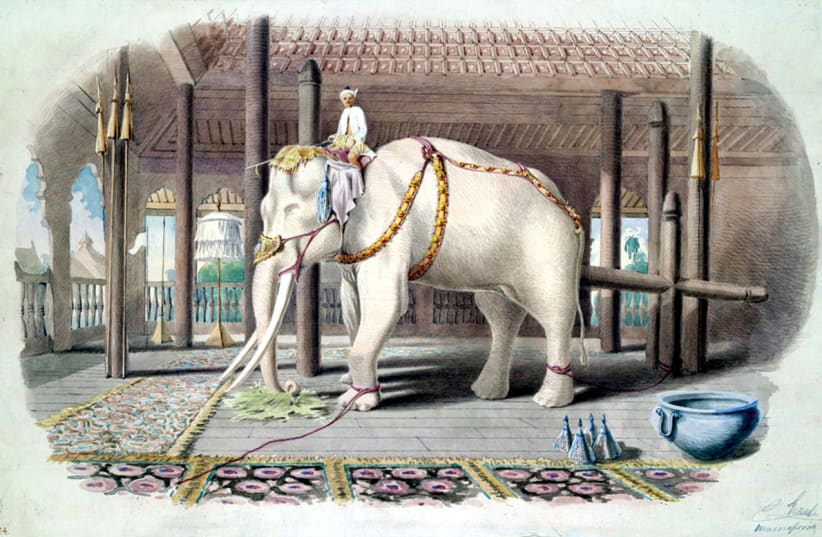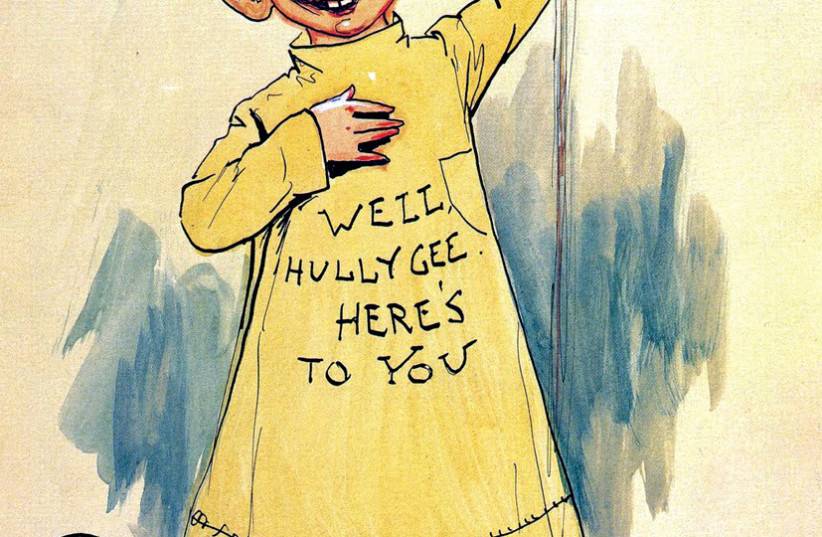English can be a very colorful language replete with a wide array of vivid terms and expressions, and I find it fascinating to delve into them and discover how they originated.
In 1967, a Swedish film titled I Am Curious (Yellow) was released. The erotic film was X-Rated and was thus considered a “blue” movie – i.e., a pornographic film. The use of the word “blue” to refer to sexually explicit content was first recorded in Scotland in 1824. It is believed that “blue” denoted lewdness because at the time, prostitutes wore blue gowns.
On a more G-rated note, the realm of music features the genre of the blues. Originating in the Deep South of the US, the blues has existed since the 1860s. The first publication of blues sheet music may have been “I Got the Blues,” published by New Orleans musician Antonio Maggio in 1908. It was described as “the earliest published composition known to link the condition of having the blues to the musical form that would become popularly known as ‘the blues.’” Early blues music was very slow and emotional, using simple harmonies with a vocalist accompanied by a guitar. Bessie Smith and Robert Johnson made the blues style very popular in the 1920s.
Why is feeling sad referred to as having “the blues”? It is said to stem from the 17th-century English expression “the blue devils,” which described the intense visual hallucinations of delirium tremens (the DTs) – the trembling and psychosis associated with alcohol withdrawal. Shortened over time to “the blues,” the phrase came to mean a state of emotional agitation or depression.
A friend who stands by you through thick and thin would be considered loyal and steadfast, or “true blue.” That phrase is said to have derived from the blue cloth that was made in Coventry, England, in the late Middle Ages. The town’s dyers had a reputation for producing material that didn’t fade with washing — that is, it remained “fast” or “true.”
In another vein, the term “blue bloods” was applied to aristocratic families in Europe. “Blue blood” is a literal translation of the Spanish phrase sangre azul. This was the designation attributed to some of the oldest and proudest families of Castile, who claimed never to have intermarried with Moors, Jews or other races. The expression is said to have originated in reference to the patent blueness of the veins of people of fair complexion as compared with those of dark skin.
Back to yellow, and two terms that relate to that vivid color spring to mind. A cowardly person is often referred to as being “yellow.” The word originally applied to birds that have a yellow belly, such as the yellow-bellied sapsucker. From there, “yellow” came to be an insulting term for a coward.
The second tern is “yellow journalism.” It is a style of newspaper reporting that emphasizes sensationalism over facts. The term was coined in the mid-1890s to characterize the type of articles featured in Joseph Pulitzer’s New York World and William Randolph Hearst’s New York Journal. Both papers were accused of sensationalizing the news in order to ramp up circulation, although they presented serious reporting as well. The term was pared down from “yellow kid journalism,” a reference to the comic strip The Yellow Kid that both papers ran. The main character was Mickey Dugan, an urchin from the slums of New York who wore an oversized yellow hand-me-down nightshirt. The cartoon’s humor was a social commentary on the class and racial tensions of the time.
In the realm of the written word comes another colorful term, “purple prose.” This phrase describes overly ornate text that may disrupt a narrative flow by drawing attention to its own extravagant style of writing. Purple prose is characterized by the excessive use of adjectives, adverbs, and metaphors. The term dates back to the Roman poet Horace, who wrote in his poem Ars Poetica (19 BC):
Weighty openings and grand declarations oftenHave one or two purple patches tacked on, that gleamFar and wide…
Speaking of words and letters brings to mind the phrase “red-letter day.” It applies to any day of special significance or opportunity. Its roots date back to classical antiquity when important days were indicated in red on the calendar. Many calendars still highlight special dates, festivals and holidays in red.
On the other hand, “red tape” is anything but special or exciting. This designation applies to the tedious and seemingly endless myriad of bureaucratic procedures. It is believed that the term originated in the early 16th century with Charles V, king of Spain and the HRE, who started to use red tape in an effort to modernize the administration that was running his vast empire. The red tape was used to bind the most important dossiers that required immediate discussion and separate them from issues that were treated in an ordinary administrative way, which were bound with string. The practice of using red tape to separate the important dossiers was soon emulated by other European monarchs.
The annoying experience of cutting through the red tape has many people getting very angry, or “seeing red.” This phrase may allude to the state of heightened emotion when the blood rises, and we become enraged.
Another association with this bright primary color is related to Russia. Its militia is called the Red Army, and the Kremlin compound (the executive branch of the government) is situated in Red Square in the heart of Moscow. The Soviets have always revered the crimson color. In Russian, the word for “red” is krasna, which also means “beautiful.”
Not so beautiful is the “green-eyed monster.” A metaphor for jealousy, it denotes a person who is “green with envy.” Why green? According to some sources, the early Greeks interchanged “green” and “pale” to mean sickly. They thought that when one was ill or jealous, the body produced too much bile, giving the skin a green tint. The origin of the metaphor “green-eyed monster” is believed to have come from Shakespeare. In his drama Othello, Iago warns the Moor: “Beware, my lord, of jealousy; it is the green-eyed monster which doth mock the meat it feeds on.”
Far better than being green with envy is being “in the pink,” which now means to be happy and healthy. However, sources trace the origin of the expression back to the Elizabethan era in England (1558-1603), when the phrase was used to epitomize the pinnacle of high quality. The term was connected to the Dianthus flower, many varieties of which are called Pinks. During that era, society valued the flowers highly, thus pink was associated with excellence.
But if you take that good feeling too far and overdo it at Happy Hour, you might end up seeing “pink elephants.” For many years, drunken stupors were purported to emanate visions of a wide number of colorful creatures such as “snakes in your boots.” But with time, the hallucinatory pastel pachyderms became the standard depiction of inebriated images.
A real-life phenomenon in the animal kingdom are white elephants. In the realm of idioms, the term “white elephant” refers to an extravagant, impractical gift that cannot be easily disposed of. It is believed that the phrase comes from the practice of the King of Siam (now Thailand) giving albino elephants to courtiers who had displeased him, so that they might be ruined by the high cost of the animals’ upkeep. In the world of commerce, a “white elephant sale” offers items that retain some value but have no intrinsic use. Such sales are useful to buyers and collectors because they have the opportunity to purchase older and harder-to-find items.
At the opposite end of the sales spectrum is “Black Friday,” the term for the Friday following Thanksgiving in the US that marks the start of the Christmas shopping season. Many stores offer highly promoted sales at discounted prices and often open early, sometimes as early as midnight or even on Thanksgiving.
In the 1950s, the term “Black Friday” was used by the police in Philadelphia and Rochester to describe the huge crowds and heavy traffic congestion accompanying the start of the Christmas shopping season. To this day, thousands of people flock to the stores on Black Friday, including the “black sheep” of the family.
In closing, when people are in the pink or feeling blue, seeing red, being green with envy or plum yellow, they may well be showing their “true colors.” ■

